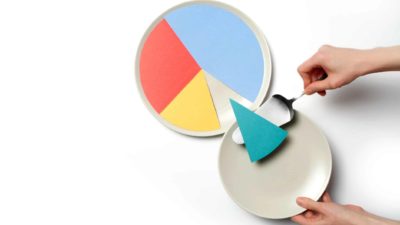This article was originally published on Fool.com. All figures quoted in US dollars unless otherwise stated.
Stock splits are all the rage in 2022. Amazon just completed its first split in more than a decade; Tesla plans a 3-for-1 split later this year. And Google parent Alphabet (NASDAQ: GOOG) (NASDAQ: GOOGL) will execute a 20-for-1 split on July 1.
Although stock splits don't affect a company's fundamentals or overall market cap, they can impact how investors feel about a stock. For many people, paying $2,000 for a single share seems outrageous. So Alphabet plans to fix this problem.
With its shares currently trading near $2,150, the company's 20-for-1 split will bring the price down to a more manageable figure of around $100. And by lowering the price that much, Alphabet shares might attract more interest from retail investors.
Why stock splits can spark retail investors' interest
For the average investor, high stock prices are a problem for several reasons. There's the obvious aforementioned sticker shock. But there's also a technical concern: portfolio diversification.
To understand why diversification is an issue, consider how much money the average retail investors have in their brokerage accounts. Wealth management company Personal Capital produced a study showing that the median balance for investors in their 20s is $10,701. And this gets to the heart of the problem: Many people, particularly young people, can't invest $2,000 in a single stock without skewing their portfolio.
Most financial professionals advise capping any single stock at 5% of the portfolio's total value. This supports portfolio diversification, and it provides protection should a single stock experience a catastrophic one-off event. But in the case of Alphabet's $2,150 stock price, your portfolio would need to have a total value of at least $43,000 to satisfy the 5% rule. And that's if you wanted to own only one share. If you owned two shares, you'd need a portfolio worth $86,000 to stay diversified. Many investors simply do not have the capital to meet this 5% threshold. So they either pass on Alphabet shares or disregard the rule and blow past the 5% cap.
One way around this problem is through fractional share trading. Many brokerages now offer investors the ability to buy these smaller 'slices' of stock. In theory, this solves the problem of high-dollar stock prices. Yet, while this process can help, it's not without a few drawbacks. For one, not all brokerages offer it. Moreover, fractional share trading can come with additional fees or commissions, and fractional shares can be more difficult to sell than whole shares.
However, if a company initiates a stock split, these fractional share concerns are alleviated. As noted before, a lack of portfolio diversification can be an issue for younger investors, who have limited amounts of capital to invest. And once you consider that many of Alphabet's own employees are in their 20s and 30s, it provides another reason the company would want to split its shares: employee compensation.
Once again, cutting the price of the shares helps both the company and investors. Alphabet will be able to dole out bite-size stock compensation; employees will be able to balance their portfolios more effectively.
Alphabet's fundamentals remain excellent
As for the company's fundamentals, Alphabet remains a leader in the digital advertising market. It has roughly 27% market share of all digital advertising. Whether it's through YouTube, Gmail, or its ubiquitous Google Search, the chances are high that you'll get shown an ad on one of Alphabet's apps or services today. And when that happens, Alphabet gets paid.
That's a big reason why Alphabet's revenue for the last 12 months is $270 billion. That puts Alphabet No. 8 on the list of the largest American companies by revenue. To put that figure in perspective, Alphabet's revenue is a few billion dollars more than the combined total sales of Ford and General Motors. And, Alphabet's not done growing: the company is increasing revenue by 23% year over year.
Yet despite these rock-solid fundamentals, the stock is down 27% year to date. Investors who want to own the company for the long term would be wise to use the stock split to build a position. And now, they'll be able to do so without putting all their eggs in the Alphabet basket.
This article was originally published on Fool.com. All figures quoted in US dollars unless otherwise stated.









